Last week began with a front page article in the AFR Victoria prone to blackouts this summer as grid wilts and ended with an AFR editorial How can Australia have third-world power blackouts?
The answer to that question is easy – we don’t have to avoid third-world blackouts because we don’t have them. The more important question is, why is Michael Stutchbury’s head in such a muddle? Stutchbury is editor in chief of the AFR and appeared on ABC Insiders this morning. Other panelists asked whether he had read “the report”.
He said he had, they evidently thought he hadn’t or he wouldn’t be saying what he was saying. Anyway he used the terms “dispatchable” and “baseload” as though they were interchangeable, which they are not. Katharine Murphy, I think, suggested that the report said it was ageing, inflexible coal-fired power that was causing unreliabilty in the grid, rather than intermittent renewables. Stutchbury seemed unable to understand that.
Federal energy minister Angus Taylor has used the publicity to attack what he calls the mad rush to renewables, especially in Victoria, and portraying himself as the man to fix the mess.
So, what is it all about?
First, some links:
- Giles Parkinson at RenewEconomy – AEMO worries about ageing coal fleet and summer extremes, wants new tools
- Alan O’Neil at RenewEconomy – ConfUSEd by the ESOO? You’re not alone
The ABC Online and O’Neil links are perhaps most helpful, but I found it instructive to go back to “the report” which is 2019 Electricity Statement of Opportunities, August 2019: A report for the National Electricity Market, a 124-page document produced by AEMO (The Australian Energy Market Operator).
First note the phrase Statement of Opportunities. A central purpose of the document is advise state authorities and capitalists where investment is needed. It is not a memo to the Federal Minister, except that he chairs the COAG Energy Council, and the report indicates what might be on the agenda at the next meeting, which is urgently required. By statute the COAG Energy Council should meet at least twice a year. The last meeting in December last year was shut down by the chair on a technicality (which must have been researched beforehand) when he did not like the direction in which the meeting was heading under the initiative of NSW. There hasn’t been a meeting since then.
Now in order to understand the kerfuffle there needs to be an explanation the abbreviation ‘USE’, which stands for Unserved Energy. USE is the standard that applies by regulation in the National Electricity Market. It means that on average, in any given financial year, electricity users should not be bereft of power more than 0.002% of the time. If you do the calculations, that is about 10 minutes. I understand that it is a high standard compared with comparable countries, which costs consumers because it means higher prices. To describe a breach of the standard as “third-world” is ignorant and vexatious.
I need to note here that USE does not include thunderstorms or other such acts on God.
AEMO keep tabs on everything, including the weather, and crunch all the data in mathematical models. Here is the future of USE in a graph:
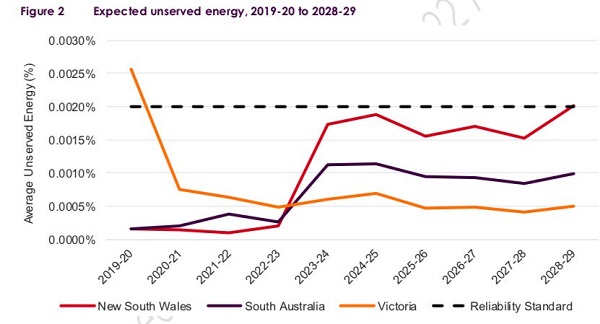
Please note some states are not shown because no breach of the standard is foreseen.
So the main pinch is next summer in Victoria, when USE could become 0.0148%, or an average of 77 minutes. AEMO knows that the burden will fall unequally, which is why they say it could mean between 260,000 and 1.3 million households being without power for four hours. At the same time many households will have no outage.
That still looks like a garden variety storm outage here in SEQ. I recall last summer an incident where on the following afternoon 500 Energex staff were still working on 700 faults.
However, such a doomsday eventuality would only happen next Victorian summer with the concurrence of a number of factors:
- Firstly, there needs to be a one in 10-year peak in demand.
- Secondly, two power stations currently closed for repair — AGL’s Loy Yang A2 (500MW) in Gippsland and Origin’s gas plant in Mortlake (259MW) — are not returned to service in time. They are due back from the end of December.
- Third, the shortfall cannot be made up by importing power from Tasmania, SA and/or NSW.
Of relevance here, AGL has closed two of its Torrens Island A gas units in SA, but with urging has now agreed to open them for the summer. To do this they need the permission of the SA government. One would assume permission will be granted. However, AEMO assumes nothing that hasn’t happened yet, so there calculations leave them out.
On previous form on the promised return of the Victorian plants they assume:
- A 30% probability that Loy Yang A Unit 2 remains out of service until 1 March 2020
- A 60% probability that the Mortlake unit remains out of service until 1 March 2020.
AEMO may be able to ameliorate the situation with demand response, where customers are paid to reduce the power consumption. To maximise the chance of avoiding blackouts AEMO is asking some changes in definitions and rules, plus a paid reserve of standby power. Audrey Zibelman, CEO of AEMO, in an AFR article How to avoid blackout summers has expressed what she wants:
- 1. We need a reliability standard that is consistent with international norms and affords us as the system operator the ability to have sufficient resources to meet summer demand, the vast majority of the time, at the lowest cost possible.
- 2. Energy markets must be redesigned to allow for the greatest amount of participation by both demand and supply resources as soon as possible, and begin to pay more accurately for the firming capability and other services we need to keep the system intact.
- 3. The process for developing out the system through the Integrated System Plan and constructing the necessary transmission to achieve the best outcomes for consumers, as well as the markets necessary to make better use of existing and draw in new investment, must be agreed to and enacted. In particular, we cannot entertain any delay in the construction of transmission that has been identified as necessary to replace retiring power stations and that also increases reliability and reduces prices.
She says she’s had the nod from everyone who matters in the industry and the states.
All she really needs now is the bloke who chairs the COAG Energy Council to call a meeting. Instead he seems intent on building his own sandpit on the road everyone wants to travel down.
Is he wrong-headed or deliberately obstructive for another purpose?
I think it has to be the former.
However, nixing the NEG was a critical part of ejecting Malcolm Turnbull, according to Niki Savva. PM Scott Morrison is, I think, completely ignorant on these matters, except he knows he has to keep the fossil fuel lobby onside and reward those in favour of nixing the NEG. Simple politics for him.
And Angus Taylor meets the requirement that seems to pervade ScoMo’s government, of pretending to do something when you are not.
I must say I’m impressed with what AEMO has been up to lately.
Firstly, they are working on a plan to decarbonise the grid in the next 20 years. See Giles Parkinson in:
Also in Western Victoria Renewable Integration Project Assessment Conclusions Report July 2019 they look to how the transmission network in western Victoria needs to be enhanced:
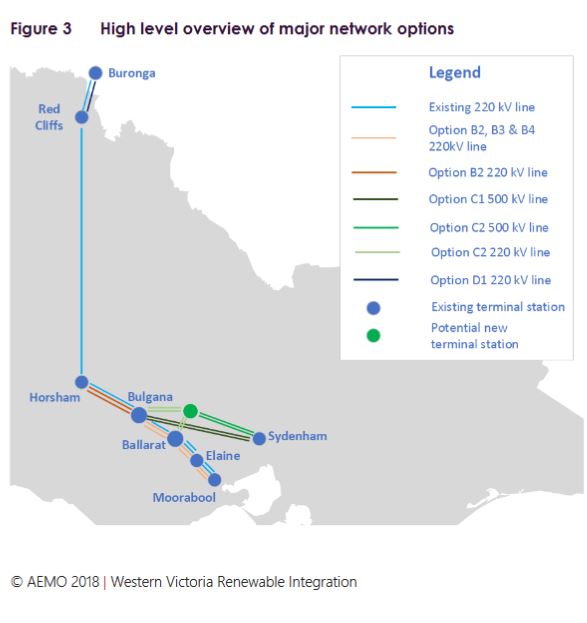
That will make more renewable energy available and reduce prices.
Then in their Quarterly Energy Dynamics Q2 2019 they run the ruler over everything. Here’s a selection of their 63 figures.
First, the profile of daily energy generation has changed radically, largely through the influx of large-scale and rooftop solar in Queensland:
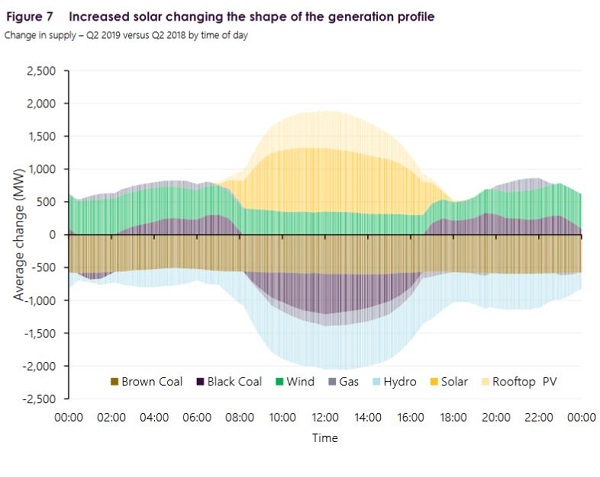
This stunner shows how the daily minimum has migrated in SA:
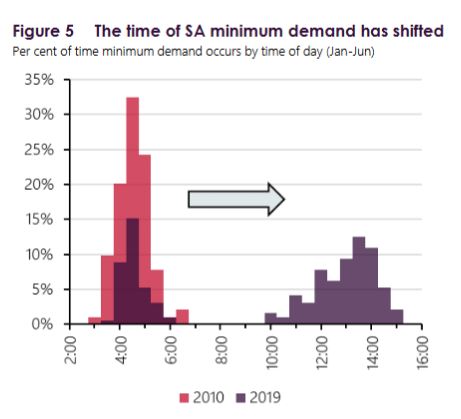
Here’s how brown coal outages are going:
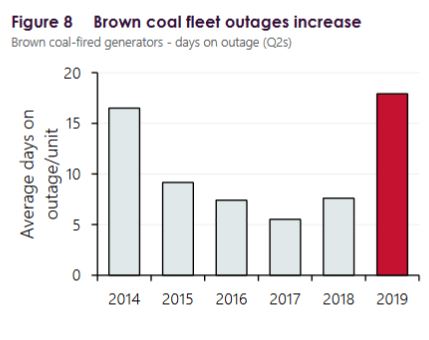
In case you think black is better:
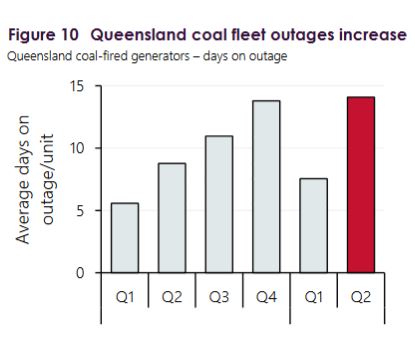
Finally, batteries are working:
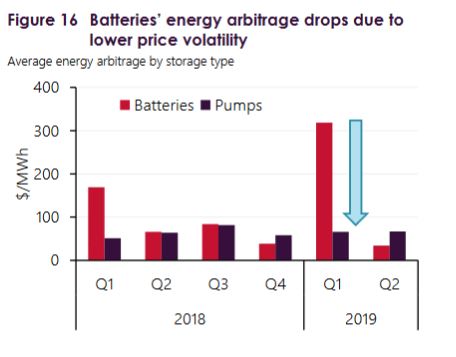
Time to give up your toys, Mr Taylor, and let the adults do their work.
Update: In case Audrey Zibelman’s AFR piece was pay-walled, it is available at AEMO as With an eye on summer and beyond.
Update 2 (26 Aug 19): Bruce Mountain, Director, Victoria Energy Policy Centre, Victoria University, who is one of the better commentators on the energy market, has an article in The Conversation Australia’s energy woes will not be solved by reinforcing a monopoly (not too sure how the title fits the content).
Mountain says that AEMO is not allowed to take mitigating action because that would amount with interfering with the market, which is regarded as sacred:
- To really understand the issues here, we need to look back to last year. In 2018, AEMO sought to change Australia’s energy regulations so AEMO could buy as much reserve capacity as it decided was needed to reliably manage unlikely but possible severe failures.
It also asked for the authority to buy reserves for longer periods so that it could source reserves more cheaply.
The Australian Energy Market Commission (AEMC) that sets the rules rejected this application on the basis that the standards were already high enough – maybe even too high – and AEMO was unduly risk-averse (the political risk associated with power failures made it so). By implication, left to its own devices AEMO would look after itself, at customers’ expense.
Whatever the stated rationale, underlying AEMC’s rejection of AEMO’s application is the philosophy of the sanctity of the market: wherever possible, the market is to be protected from intervention.
I think there is a difference in philosophy and tension between Audrey Zibelman, CEO of AEMO and John Pierce who heads the AEMC, the regulator. Mountain backs Zibelman.

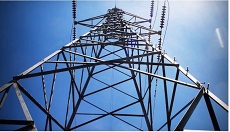
In case Audrey Zibelman’s AFR piece was pay-walled, it is available at AEMO as With an eye on summer and beyond.
Brian:
should be a start to a sensible conversation between the states that do want to do something sensible that cannot be stuffed up by the feds.
However, I think there are important differences and opportunities associated with solar PV and wind and we should not be trying to push our future production and demand systems into something that is like what we have now. For example, there is lots of scope for more controlled power. (Ex of controlled power: Off peak hot water) Also scope for industries that have high power consumption, relatively low capital costs and the ability to absorb blackouts.
I’ve added an update as follows to the post.
Bruce Mountain, Director, Victoria Energy Policy Centre, Victoria University, who is one of the better commentators on the energy market, has an article in The Conversation Australia’s energy woes will not be solved by reinforcing a monopoly (not too sure how the title fits the content).
Mountain says that AEMO is not allowed to take mitigating action because that would amount with interfering with the market, which is regarded as sacred:
To really understand the issues here, we need to look back to last year. In 2018, AEMO sought to change Australia’s energy regulations so AEMO could buy as much reserve capacity as it decided was needed to reliably manage unlikely but possible severe failures.
It also asked for the authority to buy reserves for longer periods so that it could source reserves more cheaply.
The Australian Energy Market Commission (AEMC) that sets the rules rejected this application on the basis that the standards were already high enough – maybe even too high – and AEMO was unduly risk-averse (the political risk associated with power failures made it so). By implication, left to its own devices AEMO would look after itself, at customers’ expense.
Whatever the stated rationale, underlying AEMC’s rejection of AEMO’s application is the philosophy of the sanctity of the market: wherever possible, the market is to be protected from intervention.
I think there is a difference in philosophy and tension between Audrey Zibelman, CEO of AEMO and John Pierce who heads the AEMC, the regulator. Mountain backs Zibelman.
/update
What I didn’t say is that when Finkel was doing his review he called in on Pierce at the Australian Energy Market Commission. He asked whether there were any engineers present. When he was advised “no” he said, “What are we here for then?”
Pierce is a lawyer.
Brian:
Markets can provide a good way of controlling cost and supply under some circumstance. But, despite what some market suppliers say markets are not holy writ and alternatives may give better results.
In addition, markets have to be fit for purpose. For example, the spot market that is being used during peak demand periods results in very high prices and the risk of shortages if generators don’t think that it is worth turning a generator on in the hope that they will be the one who wins the bidding war. The contracts to supply capacity that I keep babbling on about provide a better way of ensuring that capacity is available when required.
Precisely. Technical expertise is an important, but not the only part of the mix.
Need to be careful about only listening to power engineers. Sometimes what they really want is to preserve the systems that they are used to instead of trying to understand the opportunities and potential problems that come with the move to renewables.